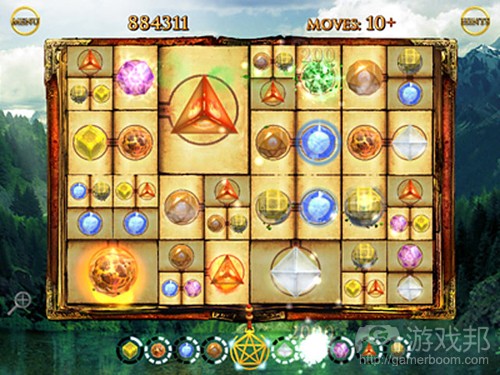G5娱乐Vlad Suglobov:匠心精神是成功和进一步扩张的关键
G5娱乐Vlad Suglobov:匠心精神是成功和进一步扩张的关键
原作者:Jon Jordan 译者:Vivian Xue
在手游市场上,没有什么比一款拥有活跃用户的游戏更具价值的东西了。
它就像复利一样,保障了你未来每月,甚至每年的收入。
并且,如果一家公司有野心的话,这些游戏带来的收入还能加速他们商业的进一步发展。
瑞典上市发行商G5娱乐的首席执行官Vlad Suglobov从不缺乏雄心壮志。
过去的十年间,G5在他的监管下从一家小型PC休闲游戏发行商,发展成一家利润越来越高的F2P手游开发商,主打寻物类型游戏。
“寻物游戏是一个利基类型,但它正以每年30%的速度增长,我们拥有50%的市场份额,”他指出。
G5的发展反映了近年来的这一市场变化轨迹。2014年手游从付费解锁转变为F2P模式导致他们进入低谷期,自那时至今,该公司在斯德哥尔摩纳斯达克第一交易所的股价上涨了20倍以上。
2017年销售额增长120%,利润猛增167%。G5成为了PocketGamer.biz 2017年间观察的游戏公司中表现最佳的一家公司。
一切在于专一
G5的成功主要归功于游戏《神秘之城》(Hidden City),G5收入的主要来源。它是G5两大终身销售价值合计超过1亿美金的寻物游戏之一。
事实上,公司对于寻物游戏的专注使得他们建立起了某一特定类型的玩家群体,并能够通过交叉推广将玩家从一个游戏吸引到另一个游戏中。
“一切在于专一,”Suglobov说。
“竞争无处不在,所以为什么不把注意力集中在你最了解的事物上呢?”
除了选定游戏类型外,G5还同样注重获取新用户,他们形成并日益熟练地运用了一种高度目标化用户获取策略(highly targeted user acquisition)。
尤其是,这种策略在成功扩大了营销规模,加速了特定时间和特定国家内销量的增长的同时,还带来了一些看似不寻常的结果,比如他们通过语言本地化而非文化本地化获得了庞大的日本粉丝群体。
在某种程度上,Suglobov认为这是由于寻物游戏风格在某方面和日本文化产生了共鸣,在中国则没有。另一个原因是日本市场是缺乏吸引中年女性的高质量手游,日本国内开发商更关注利润丰厚的宅男市场。
并且他当然非常清楚G5游戏的核心玩家。
“我们为30岁以上的女性制作游戏,”他说。
四处扩张
这一玩家细分策略取得了良好的成效。
他们比其他玩家群体更乐意消费——G5的平均每付费玩家每月收入为44.30美元。G5也没有太多竞争对手,至少在寻物游戏领域,曾经的竞争对象BigFish和GameInsight已分别将重心转移到了娱乐场游戏和核心游戏类型上。尽管Game Insight似乎在考虑带着《神秘庄园》(Mystery Manor)回归。
G5最近还花了60万美元收购了两个IP《深海噩梦》(Nightmares from the Deep)和《寻物侦探》(Kate Malone),两个由波兰开发商Artifex Mandy开发的寻物游戏。
G5注重核心玩家,但这不意味着他们将放弃探索新机会。2017年他们推出了第一款三消游戏《海盗与珍珠》(Pirates & Pearls),尽管销量暂时没有起色,但Suglobov说这是G5有史以来最棒的发行。
这种说法似乎有些矛盾,但事实上,这正完美反映了G5为何能够成功。
“不必着急,”Suglobov说。
“我们可能要花一年时间才能研究透一款游戏,直到游戏被优化到令人满意的程度我们才会开始对UA进行大量投资。”
这种致力于优化游戏再进行有意义的UA投资的态度正是G5持续成功的基础。
这种做法使这个公司能够了解它的玩家:他们是什么样的人,可以向他们交叉推广多少游戏,以及他们会为游戏花多少钱。
本文由游戏邦编译,转载请注明来源,或咨询微信zhengjintiao
In the mobile games market, few things are now more valuable than a game with active users.
Like compound interest, it’s a guarantee of future revenue, month-on-month, even year-on-year.
And, if a company has the guts, these games also provide the cashflow to further accelerate their business.
Vlad Suglobov, CEO of Swedish-listed publisher G5 Entertainment (aka G5 Games in its consumer guise), doesn’t lack ambition.
Over the past decade, he’s overseen the company’s growth from a small publisher of casual PC games to an increasingly profitable developer of free-to-play mobile games, mainly in the hidden object genre.
“The hidden object genre is a niche, but it’s growing at 30 per cent a year and we have 50 per cent share,” he points out.
G5 has reflected this market trajectory in recent years. Since its nadir in 2014 when it was struggling to switch its mobile games from pay-to-unlock to F2P, its share price on the Stockholm-based Nasdaq First exchange has risen over 20-fold.
Sales were up 120 per cent in 2017, with profits racing ahead, up 167 per cent. The result was G5 was the best performer of all the game companies PocketGamer.biz tracked during 2017.
Focus is everything
The primary reason is the success of a single game, Hidden City, which now accounts for the majority of G5’s sales. It’s one of G5’s two hidden object games that have generated more than $100 million in lifetime sales.
Indeed, the company’s focus on the hidden object genre has enabled it to build up a certain type of audience, daisy-chaining players from one game to another via cross-promotion.
“Focus is everything,” says Suglobov.
“Competition is everywhere, so why not focus on what you know best.“
Aside from its chosen genre, G5 has also focused, and become increasingly adept, at bringing in new players through highly targeted user acquisition.
In particular, its ability to successfully scale this marketing to accelerate growth at specific times and in specific countries has resulted in seemingly peculiar outcomes such as its strong Japanese fanbase, gained through language localisation but no culturalisation.
In part, Suglobov puts this down to something about the style of hidden object games that chimes in Japanese culture in a way it doesn’t in China, for example. The lack of high quality mobile games that appeal to middle-aged Japanese women from domestic developers more focused on the lucrative core male otaku market is another factor.
And, yes, he is very clear about defining G5’s core audience.
“We make games for women aged in their 30s and older,” he says.
Expanding everywhere
As audience segments goes, it’s a good one to appeal to.
They are more likely to spend than other segments – G5’s average revenue per paying player is $44.30 per month – and there isn’t much competition, at least in the hidden object space in which one-time competitors such as Big Fish and Game Insight have respectively switched focused to casino and core genres. Though Game Insight looks to be eyeing a comeback with Mystery Manor.
G5 also recently spent $600,000 acquiring the Nightmares from the Deep and Kate Malone IPs, both hidden object titles previously published by Polish developer Artifex Mundi.
Not that, with its core audience in mind, it isn’t exploring new opportunities too. It launched Pirates & Pearls, its first match-three game in 2017, and while sales haven’t yet taken off, Suglobov says the launch is G5’s best to-date.
Those two statements seem disconnected but, in fact, are a perfect example of how G5 has built its success.
“There’s no rush,” says Suglobov.
“It can take us a year to work out what’s going on with a game and fix it to the point where we can start aggressively investing in UA.”
And it’s this focus on getting a game to the stage where it makes sense to aggressively ramp UA that is G5’s foundation for sustained success.
The result is a company which understands its audience: who they are; how many games it can cross-promote to them; and how much they’re going to spend.(source: Pocket Gamer.biz )








































 闽公网安备35020302001549号
闽公网安备35020302001549号